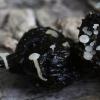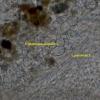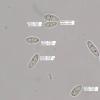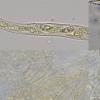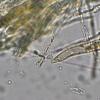
08-12-2025 17:37
 Lothar Krieglsteiner
Lothar Krieglsteiner
20.6.25, on branch of Abies infected and thickened

15-01-2026 15:55
 Lothar Krieglsteiner
Lothar Krieglsteiner
this one is especially interesting for me because

13-01-2026 07:28
 Danny Newman
Danny Newman
Chlorociboria glauca on indet. decorticate logThe

13-01-2026 08:43
 Danny Newman
Danny Newman
Tricladium varicosporioides on indet. decorticate

07-01-2026 22:22
 Danny Newman
Danny Newman
Tatraea sp. on indet. hardwood The Swag, Great Sm

13-01-2026 09:10
 Danny Newman
Danny Newman
Dasyscyphella chrysotexta on indet. decorticate ha

13-01-2026 10:13
 Danny Newman
Danny Newman
Cordieritidaceae sp. on indet. wood w/ Hypoxylon s
Phaeohelotium fagineum ?
Thierry Blondelle,
04-06-2024 21:26
 Bonjour,
Bonjour,Je vous soumets cette récolte sur faîne (cupules of Fagus) que j'ai déterminée comme étant Paeohelotium fagineum d'après la clé de Declercq (est-ce la dernier version pour les Hymenoscyphus ?)
J'ai tout de même quelques interrogations sur mon interprétation de la micro:
- Je distingue 3 couches succesives sous-hyméniales (une couche d'excipulum hymenial de type intricata, une couche intermédiaire de type porrecta, une couche d'excipulum ectal basale de type globulosa-angularis.
- Un OCI voisin de 2 plutôt que de 0-1
- des spores à 1-2 cellules. Est-ce un critère récurrent ?
Mes observations sont-elles suffisantes et confirment-elles l'espèce ?
Merci pour vos avis.
Salutations
Thierry
Hans-Otto Baral,
04-06-2024 23:14

Re : Phaeohelotium fagineum ?
P. fagineum is a species with a short stout stipe. The living paraphyses do not contain VBs in your case which excludes a lot of Hymenoscyphi. Important would be to clarfy whether the spores are ejected when non-septate or when septate. If you find living mature asci you will see that. Also iodine reaction and croziers are required.
Thierry Blondelle,
05-06-2024 07:28

Re : Phaeohelotium fagineum ?
Thanks Zotto for these new ways of research.
Thierry Blondelle,
05-06-2024 23:12
Hans-Otto Baral,
06-06-2024 08:50

Re : Phaeohelotium fagineum ?
The apical ring looks Hymenoscyphus-like, but that type occurs also elsewhere. I see no living asci, we cannot be sure about the expulsion. And for croziers I am similarly uncertain, one needs the cel below, unruptured from the ascus.
My first idea was H. varicosporoides, but I remembered that species only with a short stalk. Now when looking in my folder there are several with long stalks (e.g. 18.II.2015, J. Balda). Also the original description refers to a long-stalked fungus. So I think this is a good option. The fungus has an interesting anamorph adapted to running or standing water.
Thierry Blondelle,
06-06-2024 13:52

Re : Phaeohelotium fagineum ?
Thanks a lot. The fungus rised on beechnuts fallen to the edge of a little stream. This confirm it is a species of damp places.
I am going to try another micros. How to identify living asci ?
I am going to try another micros. How to identify living asci ?
Hans-Otto Baral,
06-06-2024 17:17

Re : Phaeohelotium fagineum ?
Well, sorry, I wrote this 100x in this forum. Please go to my old homepage, the front page illustrates without words.

